#telemetry antenna
Text
Anakin in His Podracer
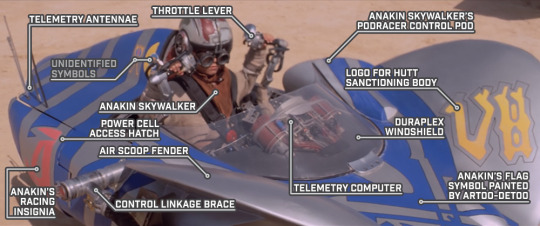
STAR WARS EPISODE I: The Phantom Menace 00:59:10
#Star Wars#Episode I#The Phantom Menace#Tatooine#Mos Espa#Mos Espa Grand Arena#Boonta Eve Classic#podrace#starting grid#Anakin Skywalker#Anakin Skywalker's podracer#control pod#telemetry antenna#throttle lever#unidentified symbol#Anakin's racing insignia#power cell access hatch#air scoop fender#control linkage brace#duraplex#windshild#Hutt sanctioning body#telemetry computer#R2-D2
2 notes
·
View notes
Text
Updated:
The agency’s Deep Space Network facility in Canberra, Australia, sent the equivalent of an interstellar “shout” more than 12.5 billion miles (19.9 billion kilometers) to Voyager 2, instructing the spacecraft to reorient itself and turn its antenna back to Earth. With a one-way light time of 18.5 hours for the command to reach Voyager, it took 37 hours for mission controllers to learn whether the command worked. At 12:29 a.m. EDT on Aug. 4, the spacecraft began returning science and telemetry data, indicating it is operating normally and that it remains on its expected trajectory.
386 notes
·
View notes
Text
Follow NASA’s Artemis I Moon Mission: Live Tracker, Latest Images, and Videos
youtube
On Nov. 16, 2022, the Artemis I mission officially began with the launch of the Orion spacecraft atop the Space Launch System rocket. The rocket and spacecraft lifted off from historic Launch Complex 39B at NASA’s Kennedy Space Center in Florida.
Now, the Orion spacecraft is about halfway through its journey around the Moon. Although the spacecraft is uncrewed, the Artemis I mission prepares us for future missions with astronauts, starting with Artemis II.
Stay up-to-date with the mission with the latest full-resolution images, mission updates, on-demand and live video.
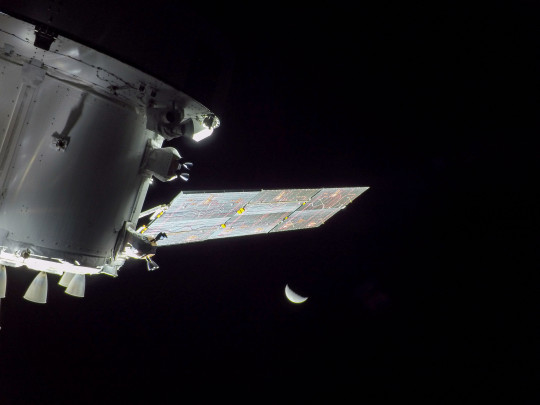
Imagery:
Find full-resolution images from the Orion spacecraft as they are released here.
Launch imagery can be found here. When Orion splashes down in the Pacific Ocean on Dec. 11, the images will be available here, as well!
youtube
Videos:
This playlist contains informational videos, as well as upcoming and past live events, about Artemis I.
You can watch a livestream of the Artemis I mission here. (Just a note: the livestream may cut off during moments when the Orion team needs higher bandwidth for activities.)
Keep yourself updated on the upcoming broadcasts of Artemis milestones with the NASA TV schedule.
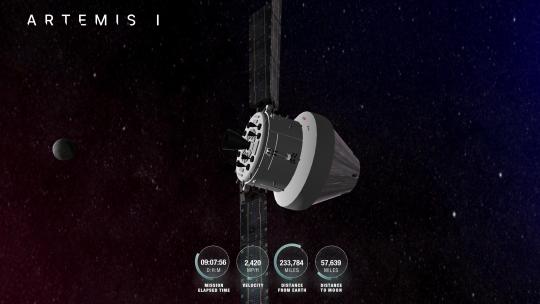
Trackers:
Our Artemis I Tracker uses live telemetry data streamed directly from Mission Control Center in Houston to show Orion position, attitude, solar array positions, and thruster firings throughout the mission.
“Eyes on the Solar System” shows Orion's position along the Artemis I trajectory and in relation to other NASA spacecraft and objects in the solar system.
“DSN Now” shows which antenna on Earth’s Deep Space Network is communicating with Orion.
youtube
Updates:
Read up on where Orion is and what’s next in the Artemis I mission with the Mission Blog.
Thank you so much for following with us on this historic mission. Go Artemis!
Make sure to follow us on Tumblr for your regular dose of space!
#nasa#space#moon#science#technology#artemis#nasamoonsnap#orion#megamoonrocket#sls#spacelaunchsystem#lunarmission#Youtube
1K notes
·
View notes
Text

NASA’s Ingenuity Mars Helicopter Team Says Goodbye … for Now
April 16, 2024
The final downlink shift by the Ingenuity team was a time to reflect on a highly successful mission — and to prepare the first aircraft on another world for its new role.
Engineers working on NASA’s Ingenuity Mars Helicopter assembled for one last time in a control room at the agency’s Jet Propulsion Laboratory in Southern California on Tuesday, April 16, to monitor a transmission from the history-making helicopter. While the mission ended Jan. 25, the rotorcraft has remained in communication with the agency’s Perseverance Mars rover, which serves as a base station for Ingenuity. This transmission, received through the antennas of NASA’s Deep Space Network, marked the final time the mission team would be working together on Ingenuity operations.
Now the helicopter is ready for its final act: to serve as a stationary testbed, collecting data that could benefit future explorers of the Red Planet.
“With apologies to Dylan Thomas, Ingenuity will not be going gently into that good Martian night,” said Josh Anderson, Ingenuity team lead at JPL. “It is almost unbelievable that after over 1,000 Martian days on the surface, 72 flights, and one rough landing, she still has something to give. And thanks to the dedication of this amazing team, not only did Ingenuity overachieve beyond our wildest dreams, but also it may teach us new lessons in the years to come.”
Originally designed as a short-lived technology demonstration mission that would perform up to five experimental test flights over 30 days, the first aircraft on another world operated from the Martian surface for almost three years, flew more than 14 times farther than the distance expected, and logged more than two hours of total flight time.
Ingenuity’s mission ended after the helicopter experienced a hard landing on its last flight, significantly damaging its rotor blades. Unable to fly, the rotorcraft will remain at “Valinor Hills” while the Perseverance rover drives out of communications range as it continues to explore the western limb of Jezero Crater.
Bytes and Cake
The team enjoyed some “Final Comms” chocolate cake while reviewing the latest data from over 189 million miles (304 million kilometers) away. The telemetry confirmed that a software update previously beamed up to Ingenuity was operating as expected. The new software contains commands that direct the helicopter to continue collecting data well after communications with the rover have ceased.
With the software patch in place, Ingenuity will now wake up daily, activate its flight computers, and test the performance of its solar panel, batteries, and electronic equipment. In addition, the helicopter will take a picture of the surface with its color camera and collect temperature data from sensors placed throughout the rotorcraft. Ingenuity’s engineers and Mars scientists believe such long-term data collection could not only benefit future designers of aircraft and other vehicles for the Red Planet, but also provide a long-term perspective on Martian weather patterns and dust movement.
During this final gathering, the team received a farewell message from Ingenuity featuring the names of people who worked on the mission. Mission controllers at JPL sent the message to Perseverance the day before, which handed it off to Ingenuity so that it could transmit the farewell back to Earth.
Decades of Room
If a critical electrical component on Ingenuity were to fail in the future, causing data collection to stop, or if the helicopter eventually loses power because of dust accumulation on its solar panel, whatever information Ingenuity has collected will remain stored on board. The team has calculated Ingenuity’s memory could potentially hold about 20 years’ worth of daily data.
“Whenever humanity revisits Valinor Hills — either with a rover, a new aircraft, or future astronauts — Ingenuity will be waiting with her last gift of data, a final testament to the reason we dare mighty things,” said Ingenuity’s project manager, Teddy Tzanetos of JPL. “Thank you, Ingenuity, for inspiring a small group of people to overcome seemingly insurmountable odds at the frontiers of space.”
IMAGE....NASA’s Ingenuity Mars Helicopter, right, stands near the apex of a sand ripple in an image taken by Perseverance on Feb. 24, about five weeks after the rotorcraft’s final flight. Part of one of Ingenuity’s rotor blades lies on the surface about 49 feet (15 meters) west of helicopter (left of center in the image).
Credit: NASA/JPL-Caltech/LANL/CNES/CNRS
youtube
6 notes
·
View notes
Text
Voyager 2, which left Earth nearly 46 years ago, stopped receiving or transmitting communications in July, when controllers accidentally sent a command that shifted its antenna 2 degrees away from Earth.
“We shouted 12.3 billion miles into interstellar space, instructing it to turn its antenna back to Earth, and after 37 hours, we found out it worked!”

NASA said its highest-powered transmitter at NASA’s huge dish Deep Space Network facility in the Australian capital, Canberra, “sent the equivalent of an interstellar ‘shout’” to Voyager 2 — a round-trip communication that required some 18.5 hours each way, for the command to reach the probe and to hear back.
“The spacecraft began returning science and telemetry data, indicating it is operating normally and that it remains on its expected trajectory.”
https://www.washingtonpost.com/technology/2023/08/05/nasa-voyager2-contact-interstellar-shout/
20 notes
·
View notes
Text

LoRa communication Module

youtube
:

. https://www.newegg.com/p/2A3-00UG-000J9
youtube
.
.

. https://www4.comp.polyu.edu.hk/~csyqzheng/papers/LoRaJamming-INFOCOM21.pdf
2 notes
·
View notes
Text
NASA Engineers Make Progress Toward Understanding Voyager 1 Issue
Denise Hill with a news post from NASA:
Since November 2023, NASA's Voyager 1 spacecraft has been sending a steady radio signal to Earth, but the signal does not contain usable data. The source of the issue appears to be with one of three onboard computers, the flight data subsystem (FDS), which is responsible for packaging the science and engineering data before it's sent to Earth by the telemetry modulation unit.
On March 3, the Voyager mission team saw activity from one section of the FDS that differed from the rest of the computer's unreadable data stream. The new signal was still not in the format used by Voyager 1 when the FDS is working properly, so the team wasn't initially sure what to make of it. But an engineer with the agency's Deep Space Network, which operates the radio antennas that communicate with both Voyagers and other spacecraft traveling to the Moon and beyond, was able to decode the new signal and found that it contains a readout of the entire FDS memory.
This is not cute, space probes only do this when they're in extreme distress
2 notes
·
View notes
Text

UPDATE, Aug. 4, 2023: NASA has reestablished full communications with Voyager 2.
The agency’s Deep Space Network facility in Canberra, Australia, sent the equivalent of an interstellar “shout” more than 12.3 billion miles (19.9 billion kilometers) to Voyager 2, instructing the spacecraft to reorient itself and turn its antenna back to Earth. With a one-way light time of 18.5 hours for the command to reach Voyager, it took 37 hours for mission controllers to learn whether the command worked. At 12:29 a.m. EDT on Aug. 4, the spacecraft began returning science and telemetry data, indicating it is operating normally and that it remains on its expected trajectory.
6 notes
·
View notes
Text
Not me going out to fly the drone I just built, crash it after ten seconds, pass 30 minutes walking around like an idiot on the field after I lost all signals (battery unplugged) and only then remember that the transmitter recorded the telemetry, with the last recorded gps coordinates.
It was five feets from where I was flying it. I had it in front of me I am a dumbass

The little shit is fine btw just a bit of dirt and a defective video antenna
#gps and telemetry save lives always have it#fpvdrone#no literally it’s just 40€ more and it could save you 400€ of drone
10 notes
·
View notes
Photo
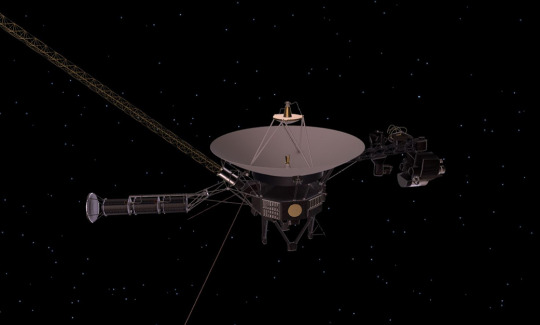
Engineers Solve Data Glitch on NASA’s Voyager 1 | NASA
Engineers have repaired an issue affecting data from NASA’s Voyager 1 spacecraft. Earlier this year, the probe’s attitude articulation and control system (AACS), which keeps Voyager 1’s antenna pointed at Earth, began sending garbled information about its health and activities to mission controllers, despite operating normally. The rest of the probe also appeared healthy as it continued to gather and return science data.
The team has since located the source of the garbled information: The AACS had started sending the telemetry data through an onboard computer known to have stopped working years ago, and the computer corrupted the information.
Suzanne Dodd, Voyager’s project manager, said that when they suspected this was the issue, they opted to try a low-risk solution: commanding the AACS to resume sending the data to the right computer.
Engineers don’t yet know why the AACS started routing telemetry data to the incorrect computer, but it likely received a faulty command generated by another onboard computer. If that’s the case, it would indicate there is an issue somewhere else on the spacecraft. The team will continue to search for that underlying issue, but they don’t think it is a threat to the long-term health of Voyager 1.
“We’re happy to have the telemetry back,” said Dodd. “We’ll do a full memory readout of the AACS and look at everything it’s been doing. That will help us try to diagnose the problem that caused the telemetry issue in the first place. So we’re cautiously optimistic, but we still have more investigating to do.” ...
2 notes
·
View notes
Text

LS
VIDEO: Bayraktar Akinci combat drone hits target with new guided ammunition
Fernando Valduga By Fernando Valduga 06/16/2022 - 12:20 PM in Military, UAV - UAV
Turkey's Bayraktar Akinci unmanned aerial combat vehicle (UCAV) has completed a firing test with internally developed KGK-SIHA-82 ammunition.
The manufacturer Baykar said that the drone, which took off from the province of Çorlu, in northwestern Turkey, on June 14, successfully completed the first firing test carried out for a certain coordinate at sea off the coast of Sinop, on the Black Sea.
The electro-optical camera on the Akinci and the ground telemetry antennas confirmed that the ammunition weighing 340 kg reached the target 30 km away accurately.
KGK-SIHA-82 ammunition (with wing-assisted guidance kit) was developed by the TÜBITAK Defense Industries Research and Development Institute (SAGE).

Akinci recently fired even the Teber-82 Guidance Kit developed by Roketsan.
UCAV holds the altitude record in the history of Turkish national aviation, reaching an altitude of 40,170 feet on the test flight on March 11.

Bayraktar Akinci is currently actively used by Turkish security forces in operational tasks. So far, six of them have entered service.
Meanwhile, export contracts have been signed with three countries for this specific combat drone. Under the contracts, the UCAV Bayraktar Akinci and the ground control systems are expected to be delivered periodically from 2023.
Tags: AkinciMilitary AviationBaykarUCAV
Fernando Valduga
Fernando Valduga
Aviation photographer and pilot since 1992, he has participated in several events and air operations, such as Cruzex, AirVenture, Dayton Airshow and FIDAE. He has works published in a specialized aviation magazine in Brazil and abroad. He uses Canon equipment during his photographic work in the world of aviation
HOME Main Page Editorials Information Events Collaborate SPECIALS Advertise About
Cavok Brasil - Digital Tchê Web Creation
Commercial
Executive
Helicopters
History
Military
Brazilian Air Force
Space
SPECIALS
Cavok Brasil - Digital Tchê Web Creation
2 notes
·
View notes
Text
Anakin Puts on His Racing Helmet
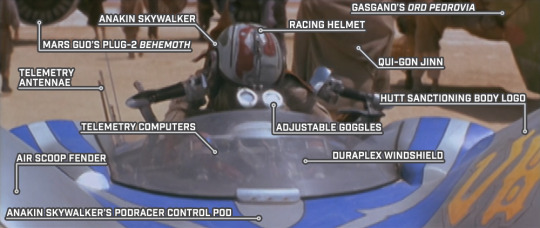
STAR WARS EPISODE I: The Phantom Menace - Deleted Scene: Complete Podrace Grid Sequence 04:12
#Star Wars#Episode I#The Phantom Menace#deleted scene#Complete Podrace Grid Sequence#Tatooine#Mos Espa#Mos Espa Grand Arena#Boonta Eve Classic#Anakin Skywalker#Mars Guo's Podracer#Plug-2 Behemoth#Gasgano's Podracer#Ord Pedrovia#racing helmet#telemetry antenna#telemetry computer#air scoop fender#Anakin Skywalker's Podracer#control pod#adjustable goggles#duraplex#Hutt sanctioning body
1 note
·
View note
Link
Beamed communication in space is almost exclusively tracked by one network – NASA’s Deep Space Network (DSN) is used to communicate with nearly every spacecraft that has made its way past the Moon. Until recently, that has meant exclusively using radio communication, which can be extremely slow compared to other forms. But a recent test shows that, with some modification, DSN’s telescopes can communicate using a much more modern type of technology – space lasers. To the chagrin of Star Wars fans everywhere, space lasers are not yet ubiquitous. But one application in particular has been paving the way for them to become more widely accepted – being used as a communication system. Psyche, NASA’s probe currently on its way to visit its namesake in the main asteroid belt, is equipped with the Deep Space Optical Communications (DSOC) experiment – in other words, it has a space laser. After it launched in October 2023, Psyche began communicating with its ground link at Palomar Observatory. But another interlocutor was eavesdropping on the pair’s laser communication. Scott Manley explains to importance of DSN.Credit – Scott Manley YouTube Channel A DSN dish at the Goldstone Deep Space Communications Complex was retrofitted with an optical communication array to become a “hybrid” antenna that can communicate using both radio and optical (i.e., laser) frequencies. And it locked onto Psyche’s test DSOC signal within a month of the spacecraft’s launch. After establishing the link, it downloaded data from the DSOC link at an astonishing 15.63 megabits per second, or around 40 times faster than the antenna would have received data if only using its standard radio transceiver. It even downloaded a high-resolution picture of the Psyche team at JPL that they had uploaded to the probe before sending it on its way. To track a relatively faint laser signal from such a far distance, the hybrid antenna had to use some new technical tricks, including a series of ultra-precise mirrors and cryogenically cooled single-photon detectors made out of nanowire material. The setup mirrored the one specifically designed for the DSOC experimental at Palomar, and it worked exactly as expected. Group photo of the JPL team responsible for DSOC that was downloaded by the retrofitted DSN antenna.Credit – NASA / JPL-Caltech It also served as a precursor for more grandiose plans. Engineers plan to scale up the system to a 64-segment mirror reflector rather than the seven segments in the current iteration. DSOC itself is setting communication speed records for being so far away from Earth. It will continue to do so as it continues past the orbit of Mars on its way to its target asteroid. DSN already has 14 operational antennae scattered on three continents, and retrofitting these reflectors on them is relatively trivial compared to setting up an entirely new dish network. Doing so might eliminate some of the bottlenecking problems we previously noted had been beginning to affect DSN’s problem. For example, the antennas could continue to use radio frequency signals for relatively low data rate tasks, such as telemetry monitoring, while relying on retrofitted optical communication systems for more data-intensive work, such as sending back video or high-resolution images. So far, the DSN’s plans for retrofitting, or even generally updating, are still in the early stages. But this proof of concept demonstration proves that the system of dishes isn’t dead yet, even if it is planned to be blasted by space lasers. Learn More:NASA – NASA’s New Experimental Antenna Tracks Deep Space LaserUT – We’re Entering a New Age When Spacecraft Communicate With LasersUT – NASA Tightbeams a Cat Video From 31 Million Kilometers AwayUT – NASA Uses Powerful Transmitters to Talk to Deep Space Spacecraft. Will Other Civilizations Receive Those Signals? Lead Image:Deep Space Station 13 with retrofitted optical reflector in the middle.Credit – NASA / JPL-Caltech The post One of NASA’s Radio Dishes Can Now Track Space Lasers Too appeared first on Universe Today.
0 notes
Text


NASA lights 'beacon' on moon with autonomous navigation system test
For 30 total minutes in February, NASA lit a beacon on the moon—successfully testing a sophisticated positioning system that will make it safer for Artemis-era explorers to visit and establish a permanent human presence on the lunar surface.
The Lunar Node 1 demonstrator, or LN-1, is an autonomous navigation system intended to provide a real-time, point-to-point communications network on the moon. The system—tested during Intuitive Machines' IM-1 mission as part of NASA's CLPS (Commercial Lunar Payload Services) initiative—could link orbiters, landers, and even individual astronauts on the surface, digitally verifying each explorer's position relative to other networked spacecraft, ground stations, or rovers on the move.
That system would be a marked improvement over conventional, Earth-based radio data relays, NASA researchers said—even more so compared to Apollo-era astronauts trying to "eyeball" distance and direction on the vast, mostly gray lunar surface.
"We've lit a temporary beacon on the lunar shore," said Evan Anzalone, LN-1 principal investigator at NASA's Marshall Space Flight Center in Huntsville, Alabama. "Now, we seek to deliver a sustainable local network—a series of lighthouses that point the way for spacecraft and ground crews to safely, confidently spread out and explore."
The experiment was launched Feb. 15 as a payload on the IM-1 mission. The Nova-C lander, named Odysseus, successfully touched down Feb. 22 near Malapert A, a lunar impact crater near the moon's South Pole region, executing the first American commercial uncrewed landing on the moon. The lander spent its subsequent days on the surface conducting six science and technology demonstrations, among them LN-1, before it officially powered down on Feb. 29.
"This feat from Intuitive Machines, SpaceX, and NASA demonstrates the promise of American leadership in space and the power of commercial partnerships under NASA's CLPS initiative," NASA Administrator Bill Nelson said in a statement after the landing. "Further, this success opens the door for new voyages under Artemis to send astronauts to the moon, then on to Mars."
During IM-1's translunar journey, the Marshall team conducted daily tests of the LN-1 beacon. The original plan was for the payload to transmit its beacon around the clock upon landing. NASA's Deep Space Network, the international giant radio antenna array, would have received that signal for--on average--10 hours daily.
Instead, due to the lander's touchdown orientation, LN-1 conducted two 15-minute transmissions from the surface. DSN assets successfully locked on the signal, feeding telemetry, navigation measurements, and other data to researchers at Marshall, NASA's Jet Propulsion Laboratory, and Morehead State University in Morehead, Kentucky. The team continues to evaluate the data.
LN-1 even provided critical backup to IM-1's onboard navigation system, noted Dr. Susan Lederer, CLPS project scientist at NASA's Johnson Space Center in Houston. The LN-1 team "really stepped up to the task," she said, by relaying spacecraft positioning data during translunar flight to NASA's Deep Space Network satellites at the Goldstone and Madrid Deep Space Communications Complexes in Fort Irwin, California, and Robledo de Chavela, Spain, respectively.
In time, navigation aids such as Lunar Node-1 could be used to augment navigation and communication relays and surface nodes, providing increased robustness and capability to a variety of users in orbit and on the surface.
As the lunar infrastructure expands, Anzalone envisions LN-1 evolving into something akin to a network that monitors and maintains a busy metropolitan subway system, tracking every "train" in real time, and operating as one part of a larger, LunaNet-compatible architecture, augmenting other NASA and international investments, including the Japanese Aerospace Exploration Agency's Lunar Navigation Satellite System.
And the technology promises even greater value to NASA's moon to Mars efforts, he said. LN-1 may improve data delivery to lunar explorers by just a matter of seconds over conventional relays—but real-time navigation and positioning becomes much more vital on Mars, where transmission delays from Earth can take up to 20 minutes.
"That's a very long time to wait for a spacecraft pilot making a precision orbital adjustment, or humans traversing uncharted Martian landscapes," Anzalone said. "LN-1 can make lighthouse beacons of every explorer, vehicle, temporary or long-term camp, and site of interest we send to the moon and to Mars."
TOP IMAGE....Taken on Tuesday, Feb. 27, Odysseus captured an image using its narrow-field-of-view camera. Credit: Intuitive Machines
LOWER IMAGE....Evan Anzalone, at lower left, principal investigator for the Lunar Node-1 demonstrator payload, monitors the LN-1 mission from the Lunar Utilization Control Area in the Huntsville Operations Support Center at NASA’s Marshall Space Flight Center in Huntsville, Alabama. LN-1 successfully tested an autonomous navigation and geo-positioning system that will make Artemis-era lunar explorers safer as they work to establish a permanent human presence on the lunar surface. Credit: NASA
5 notes
·
View notes
Text

CNN — Japan’s “Moon Sniper” robotic explorer landed on the lunar surface, but the mission may end prematurely since the spacecraft’s solar cell is not generating electricity, the Japan Aerospace Exploration Agency said.
The agency said it is currently receiving a signal from the lander, which is communicating as expected.
The uncrewed Smart Lander for Investigating Moon, or SLIM, mission landed just after 10:20 a.m. ET Friday (12:20 a.m. Saturday Japan Standard Time), according to telemetry data shared on JAXA’s live broadcast.
Currently, the lander is operating on limited battery power, only expected to last several hours.
The JAXA team is analyzing the data to determine the cause of the solar cell issue and the next steps for the lander.
It’s possible that the solar cell issue is due to the fact that the spacecraft is not pointing in the intended direction, JAXA officials said.
There is hope that as the solar angle changes on the moon, the solar cell may be able to charge again, but that may take some time and will depend on whether SLIM can survive the frigid lunar night, the team shared during a news conference.
The agency believes the mission has met the criteria to declare it a “minimum success,” because the spacecraft achieved a precise and soft lunar landing using optical navigation.
The touchdown makes Japan the third country this century — and the fifth ever — to land on the moon.
When asked to score the landing operation for SLIM, JAXA director general Dr. Hitoshi Kuninaka gave it a “60 out of 100,” while also mentioning that he is known for making “harsh comments.”
The team is also working to gather all of the scientific data obtained by the lander.

The lander was able to release its two lunar rovers, LEV-1 and LEV-2.
The LEV-1 rover moves using a hopping mechanism and is equipped with wide-angle visible light cameras, scientific equipment, and antennas that allow it to communicate with Earth.
And LEV-2, also outfitted with cameras, can change shape to move across the lunar surface.
The team is receiving a signal from LEV-1 and will see whether its cameras were able to capture any images.
JAXA officials said they will not definitively confirm the status of LEV-2 until more data is received.
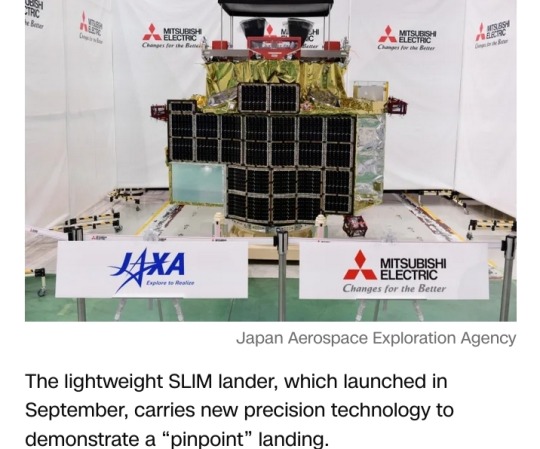
The small-scale SLIM robotic explorer, which launched in September, goes by the nickname “Moon Sniper” because it carried new precision technology to demonstrate a “pinpoint” landing.
Previous lunar missions have been able to target and reach specific zones that spanned many kilometers, but the SLIM lander targeted a landing site that stretches just 100 meters (328 feet) across.
The lander’s “smart eyes” — an image-matching-based navigation technology — rapidly photographed the sloped lunar surface on approach and autonomously made adjustments as the spacecraft descended toward touchdown.
The JAXA team is still working to determine the accuracy of SLIM’s landing, which could take up to a month.
Moon Sniper’s journey
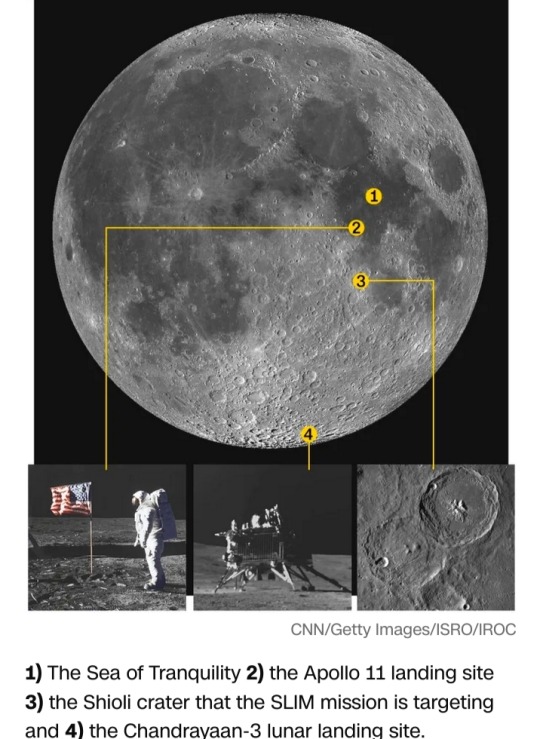
The Moon Sniper targeted a landing site near the small Shioli crater within a lunar plain called the Sea of Nectar that was created by ancient volcanic activity and lies just south of the Sea of Tranquility, where Apollo 11 landed in 1969.
The lander is designed to briefly study rocks at the site that could reveal insights into the moon’s origin.
When meteorites and other objects strike the moon, they create craters as well as rocky debris that litters the surface.
These rocks intrigue scientists because studying them is effectively like peering inside the moon itself.
Minerals and other aspects of the rocks’ composition can potentially shed more light on how the moon formed.
Landing near the sloped, rock-strewn areas around craters is a hazardous process that most missions usually avoid, but JAXA believes its lander has the technology to touch down safely on rocky terrain.
New space race

Multiple space agencies and countries have attempted moon landing missions over the past year, leading to a historic first as well as failures.
India became the fourth country — after the United States, the former Soviet Union and China — to execute a controlled landing on the moon when its Chandrayaan-3 mission arrived near the lunar south pole in August.
Meanwhile, Japanese company Ispace’s Hakuto-R lunar lander fell 3 miles (4.8 kilometers) before crashing into the moon during a landing attempt in April.
Russia’s Luna-25 also crash-landed in August during the country’s first attempt to return to the moon since the Soviet Union’s fall.
Astrobotic Technology’s Peregrine spacecraft — the first US lunar lander to launch in five decades — met a fiery end Thursday after a critical fuel leak made safely landing on the moon out of the question.
Part of the motivation behind the new lunar space race is a desire to access water trapped as ice in permanently shadowed regions at the lunar south pole.
It could be used for drinking water or fuel as humanity pushes the bounds of space exploration in the future.
This region is riddled with craters and strewn with rocks, leading to narrow landing sites.
The lightweight SLIM lander might be an effective design that could not only land in small areas of interest on the moon but also on planets such as Mars, according to JAXA.
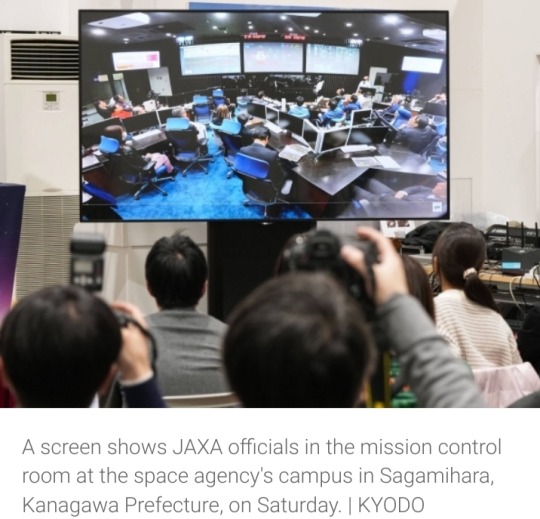
#Moon Sniper#robotic explorer#moon#Japan Aerospace Exploration Agency#Japan#Smart Lander for Investigating Moon#SLIM#Dr. Hitoshi Kuninaka#LEV-1#LEV-2#lunar rovers#Sea of Nectar#Sea of Tranquility#Chandrayaan-3#Hakuto-R#Luna-25#Peregrine spacecraft#JAXA#space#space agencies
0 notes
Text
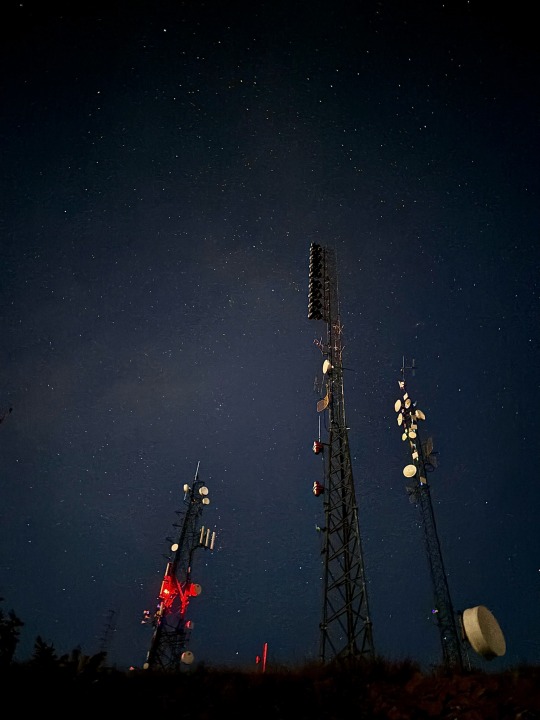
It’s only -12 degrees (f) this morning here in Missoula. The wind and all its associated advisories have moved southeast to Butte. Now the present-day residents of The Richest Hill on Earth are getting a taste of the -45-degree bursts of arctic air that has been ripping through and shutting down everything around here except the operations of Missoula County Public Schools. For the first time since Thursday, the air here has gone still.
Sunday morning brings solace as the house we bought just a year and a half ago is now largely iced over. Ice shatters and cracks into pieces as I force the sliding glass door open to let Seeley, the dog, out. On the other side of the house, ice and frost an inch thick cover the storm door leading to the front yard.
Twice now I’ve taken the time to scrape up the frost accumulating on the floor in front of the saddle threshold. The windows, both inside and out, are lined with beautifully white fluffy frost as if they’ve been prepared by a set designer for a new Disney winter wonderland movie. Condensation stands no chance. Check the box alongside ‘grateful’ to be in my small but airtight, warm, and draft-free newly-remodeled home, shielded from this violent arctic air event by sheetrock and 2x4s.
It’s a little after 7 AM now and I can’t go back to sleep. I awoke with the same pinch of slight anxiety I kicked back at throughout the full duration of my attempt at sleep. The two mezcal palomas probably helped with that. I’ve got far too many tasks to accomplish at this point, so I’ve taken up the mantra, ‘One day at a time’. This keeps the proverbial lid on the otherwise screaming flame of stress I have been somehow unintentionally maintaining despite efforts to dampen it for some time now. Maybe I’ll dive into some self-help literature on being a better me or whatever. Probably not.
For years, I’ve been the sole engineer responsible for a cluster of commercial FM transmitters and a couple of translators. The HD chain used to be my biggest enemy. I spent enough time with it to correct the time alignment and ultimately spent $70,000 to all out-replace the first-generation equipment I had been keeping alive despite its whopping efficiency factor of ~42%. At just under 7kW, that’s a lot of heat just to reach ERP.
Day by day, hour by hour I keep my phone ringer set on high and watch for automated telemetry alerts which come through to me via email and text from the transmission equipment. If things are really bad, a haunting robot voice will call me and tell me what has gone wrong. Even though I usually know what the issue could be, I like to listen to her all the way through before I hang up. Her voice is akin to the robots who would read the Harvard Sentences on the old telco test line which has sadly been decommissioned. I’ve been on call 24/7 since I was in my mid 20’s and this morning is no different. Having turned 30 in August, I’m finding more value in overseeing and modifying practices to suit the future instead of being a busy ‘worker bee’.
Priority 1 is to remotely log into the Master Control server where I can then access all of the transmitters. The big worry with weather like this is ice. With enough ice on your master antenna array, the transmission line will carry more reflected power back down the pressurized coax and into the $100,000+ Shively branch combiner. At best, this could eventually damage the filters. At worst, this could lead to a fire in the building or the melting of the coax. And if that Shively combiner was 100k in 2004/2005, is there really a difference at all between best and worst? The new transmitters all have automatic foldback in the event of high reflected power or, ‘SWR’ (standing-wave-ratio). So, the likelihood of disaster isn’t necessarily ever-present.
Even still, this stuff was, and still is in some ways, state of the art. So, if there is high reflected power coming back into the transmitters, that means Ice, which means a delicate dance of lowering forward power, FCC regulation, and yet somehow melting ice off the antennas. Essentially, a living room prayer.
Except for one older but seemingly bulletproof model, the Crown FM500, I’m fortunate to have top-notch transmitters to maintain. I’ve personally taken up replacing every transmitter at the site since I became Chief Operator in 2014, and then Chief Engineer in 2020. The Nautel VS1 transmitters, all 1kW models, have outstandingly gorgeous GUIs from which you can take in a plethora of technical data and real-time readings. I don’t know how to interpret some of the scopes.
This transmitter site was expertly designed and built in 2004 or 2005, that’s an entirely separate blog series. I have such immense pride — with a soul-protruding responsibility to maintain and carry this broadcast facility and its iconic call signs (if only to some) into the future.
The VS1s are running beautifully, forward power of 997W with 6 watts reflected on one station. This model has built-in Orban processing which, one of my great mentors, who is truly an icon in the field of broadcast, SWEARS is far superior to Omnia in delivering sonic clarity, punch, and presence on the FM dial. Some days I agree with him, most days I don’t. Who knows? Maybe my ears are the wrong shape to assess broadcast processing.
The other VS1 is running slightly more efficiently at exactly 1000 watts forward with ZERO watts reflected. This transmitter serves as the flagship call sign. The big stick. The format stands proudly somewhere between the AAA of the early 2000’s and freeform. Legend has it that the call sign reflects its creator’s initials. True? I don’t know. However, I’d be surprised if this lore weren’t true. So, of course, this transmission line is ‘perfectly matched’ as this is a technical achievement & standard every broadcast engineer strives for but is very difficult to achieve. Par for the course at this facility and on this call sign in particular.
The environment is a big thing to watch and actively maintain. I click and type into the various sensors and remote I/O boxes to see that everything is right in the sweet spot, around 72 Degrees. For temperature control, I have four WiFi-enabled GE window AC units mounted right into the wall of the building. From an app on my MacBook or iPhone, I log in every day or two and rotate the duty cycle so they don’t burn out. They’ve been running around the clock nonstop since 2020.
Moving onward, I log into the Gatesair FAX 7.5 FM+HD and hold my breath while the GUI loads up. To my absolute surprise, it’s running at full power without any errors or problems. This has not been the typical operating parameter of this device since I got it. I’m pleased. I feel the worry of this dangerously frigid Sunday morning melt away.
I have a frequency agile standby transmitter connected to a broadband antenna setup as a backup or AUX. Once a month or so during the cold winter months, I turn it on and run it for a day or two just to make sure it doesn’t ice up. Wouldn’t that be great? Lord, deliver me from the day I need my backup antenna but find my backup plan frozen over like a Stouffer’s lasagna.
The sun has come up now. I nudge the curtain and peer outside, Seeley is ready for breakfast while her dog sister, Bella, is still sleeping in the bedroom.
Radio. Is it working? I certainly am.
1 note
·
View note